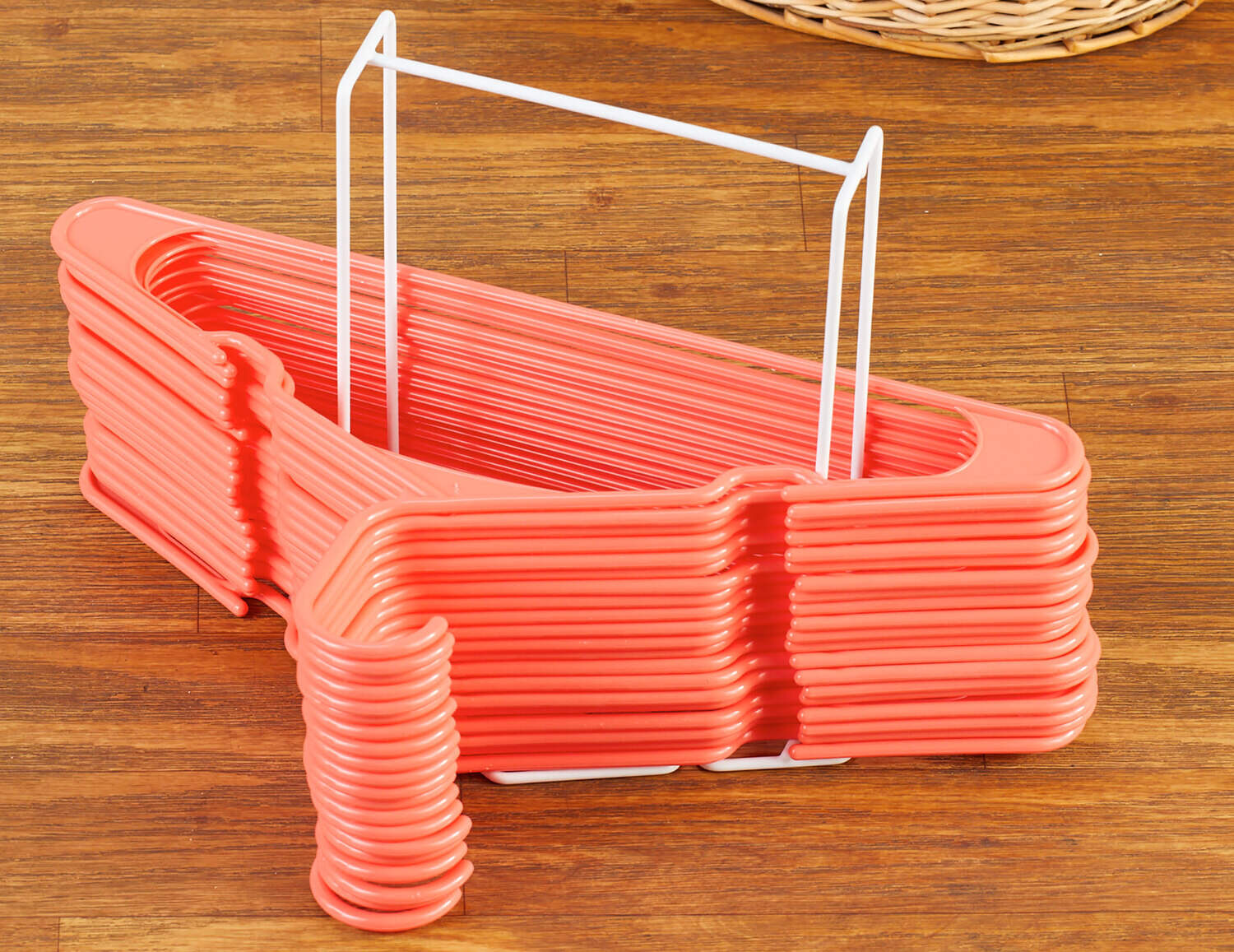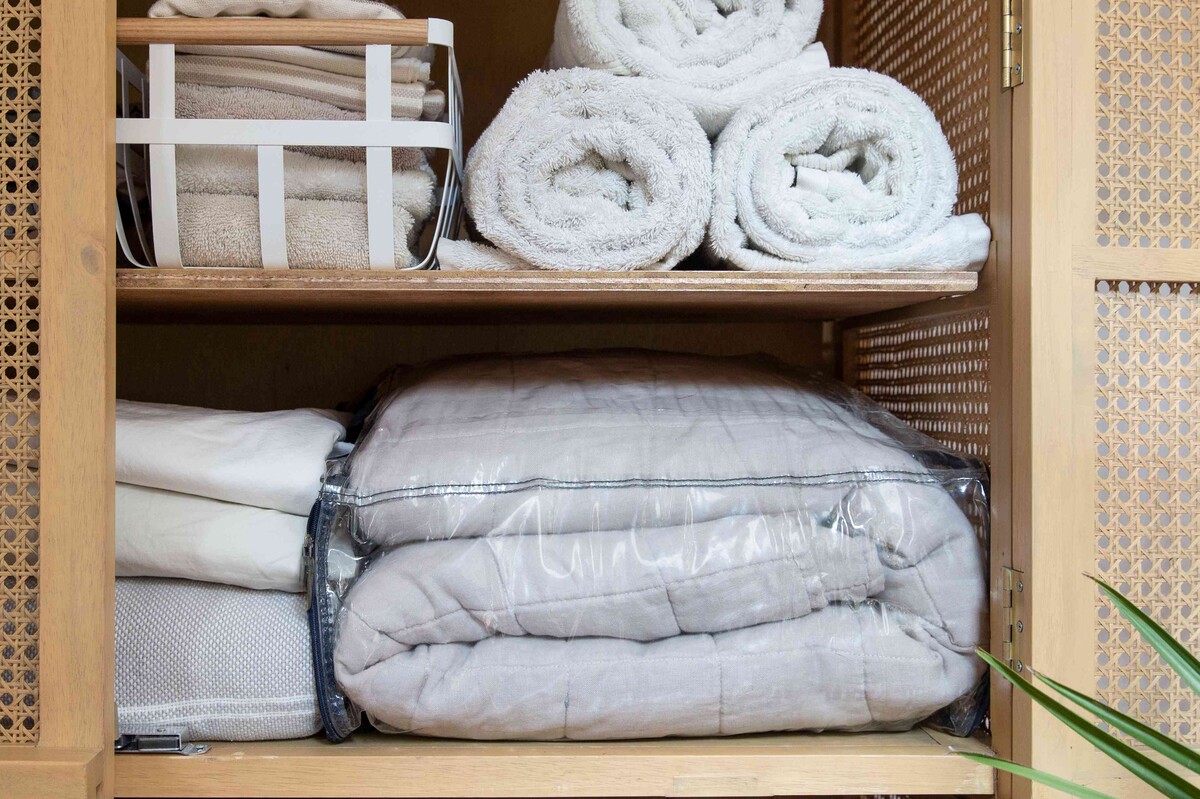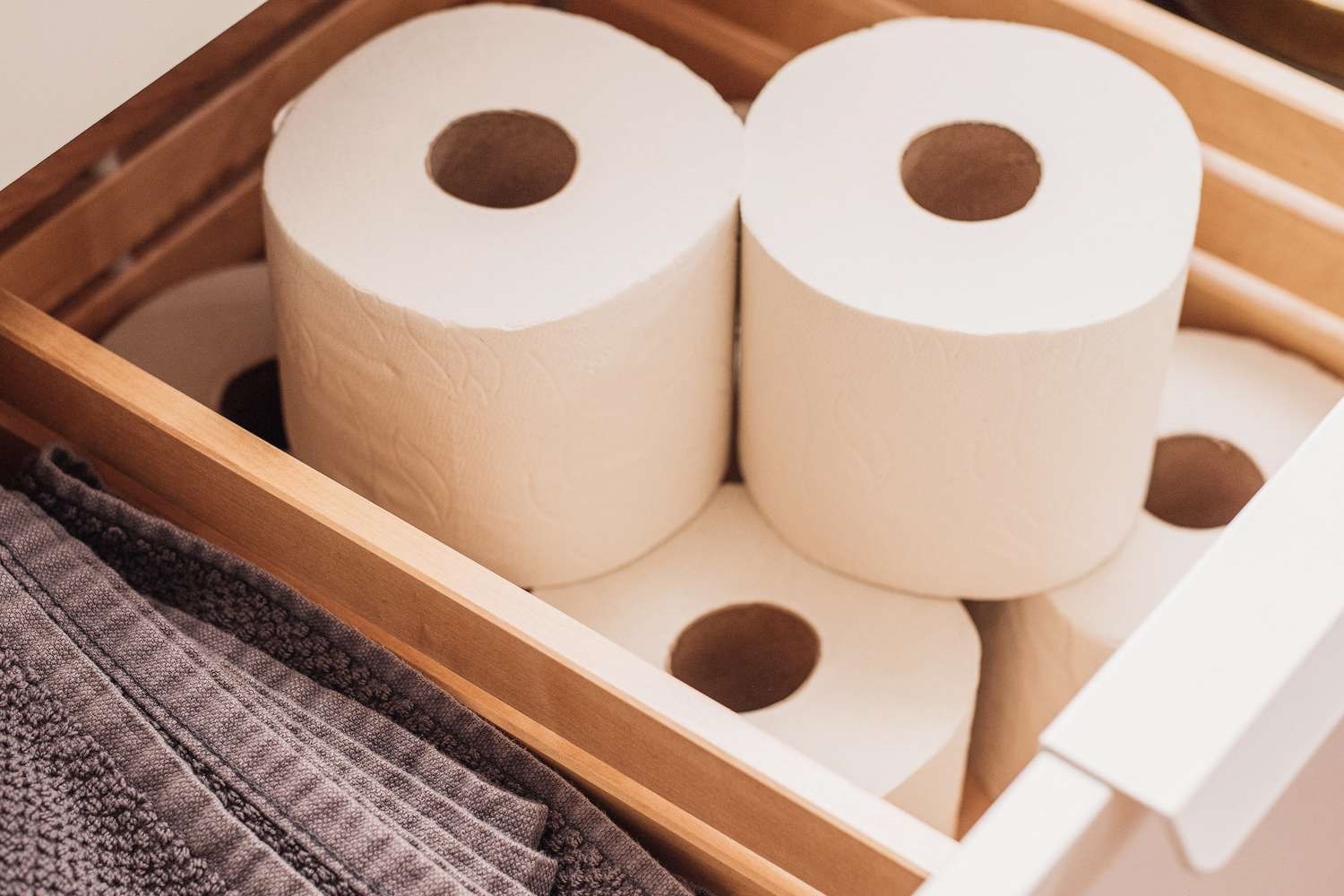

Articles
How To Store Extra Paint
Modified: January 9, 2024
Discover the best way to store extra paint with our informative articles. Keep your paint fresh and ready for future use.
(Many of the links in this article redirect to a specific reviewed product. Your purchase of these products through affiliate links helps to generate commission for Storables.com, at no extra cost. Learn more)
Introduction
When it comes to home improvement projects, there’s a good chance you’ll have leftover paint. Whether you’ve completed a room makeover or touched up some old furniture, storing extra paint properly is essential for future touch-ups and repairs. Many people make the mistake of leaving paint cans half-empty or improperly sealed, resulting in wasted paint and the need to repurchase supplies.
In this article, we’ll delve into the importance of storing extra paint and provide you with practical tips to ensure your paint remains usable for years to come. By adhering to these guidelines, you’ll save money, reduce waste, and have peace of mind knowing you have paint readily available for any touch-up or creative project.
Key Takeaways:
- Properly storing extra paint ensures longevity, usability, and convenience for future touch-ups and projects. Prepare, label, and store paint in a cool, dry place to maintain quality and preserve memories.
- Check paint condition before reusing, and dispose of it properly to protect the environment. By following these practices, you can save money, reduce waste, and be prepared for any project.
Read more: How To Store Extra Smoothie
Why Store Extra Paint
Storing extra paint serves several purposes and offers numerous benefits. Here are a few reasons why it’s important to store your paint properly:
- Touch-ups and repairs: Having extra paint on hand allows you to easily touch up scratched or damaged areas of your walls, furniture, or other surfaces. It ensures a consistent color match and saves you the hassle of trying to find the exact shade again in the future.
- Creative projects: If you enjoy DIY projects, having leftover paint can be a valuable resource. You can use it to create custom artwork, paint accent pieces, or breathe new life into old furniture. Storing the paint properly helps maintain its quality so that you can use it whenever inspiration strikes.
- Cost savings: Paint can be expensive, especially if you’re purchasing high-quality brands. By storing extra paint, you can avoid unnecessary trips to the store and save money in the long run. It’s also more eco-friendly as it reduces waste in landfills.
- Preserving memories: Sometimes, the color of a room can hold sentimental value. If you’ve spent hours selecting and applying the perfect paint, storing the leftover paint allows you to cherish those memories. You can also pass it on to future homeowners who may want to maintain the same color scheme.
Overall, storing extra paint is a smart decision that offers convenience, cost-savings, and creative opportunities. Now that we understand the importance of storing paint, let’s move on to the practical steps of preparing paint for storage.
Preparing Paint for Storage
Before you store your extra paint, it’s important to prepare it properly. Taking these steps will help maintain the paint’s quality and ensure it remains usable for future projects:
- Sealing the can: Begin by ensuring the paint can is tightly sealed. Use a rubber mallet or a clean cloth to gently tap the lid until it is securely in place. If the original lid is damaged or no longer seals properly, consider transferring the paint to a new airtight container.
- Removing excess paint: If there is a significant amount of paint remaining in the can, you may want to transfer it to a smaller container. This reduces the amount of air in contact with the paint, minimizing the chance of drying out or spoiling. Use a funnel to pour the paint into a clean, empty container and seal it tightly.
- Straining the paint: Before transferring the paint to a new container, consider straining it to remove any debris or clumps. This will help ensure a smoother application when you use the paint in the future. Use a mesh strainer or cheesecloth to strain the paint into the new container.
- Thoroughly mixing: If the paint has been sitting for a while, it’s important to mix it well before storing. Over time, the pigments and other components may settle, resulting in an uneven color or texture. Use a paint stirrer or a wooden dowel to thoroughly mix the paint until it is smooth and consistent.
- Checking expiration date: Take a moment to check the expiration date of the paint. While properly stored paint can last for several years, it’s important to be aware of any potential expiration dates. If the paint has passed its expiration date, it’s best to dispose of it rather than storing it.
By following these steps, you can ensure your paint is well-prepared for storage. In the next section, we’ll discuss the importance of selecting the right container for storing your extra paint.
Choosing the Right Container
When it comes to storing extra paint, choosing the right container is crucial to maintain its quality and longevity. Here are a few factors to consider when selecting the container for your paint:
- Airtight and leak-proof: The container you choose should be airtight and leak-proof to prevent air, moisture, or contaminants from seeping into the paint. Look for containers with secure lids that create a tight seal.
- Durable material: Opt for containers made of durable materials like metal or plastic that can withstand the test of time. Avoid using glass containers, as they can break easily and expose the paint to potential damage or spillage.
- Appropriate size: Choose a container that is an appropriate size for the amount of paint you are storing. Avoid using oversized containers, as the excess air space can lead to faster drying or deterioration of the paint.
- Opaque or light-blocking: To protect the paint from exposure to light, select containers that are opaque or provide light-blocking properties. Exposure to light can affect the paint’s color and consistency over time.
- Wide mouth or easy access: Consider selecting a container with a wide mouth or easy access opening. This will make it easier to pour or scoop out the paint when you need to use it in the future.
Remember to clean the container thoroughly before transferring the paint to ensure there are no remnants of previous substances that could contaminate the paint. Also, label the container with the paint’s color, brand, and the date it was stored. This will help you identify the paint easily and keep track of its age.
Now that you know how to choose the right container, let’s move on to the importance of labeling your paint containers for easy identification.
Labeling the Containers
Properly labeling your paint containers is crucial when storing extra paint. It helps you quickly identify the color, brand, and other important information when you need to use the paint in the future. Here are some tips for effectively labeling your paint containers:
- Color and brand: Clearly indicate the color and brand of the paint on the label. This will help you easily identify the specific shade and ensure a consistent color match when you need to use the paint again.
- Date of storage: Include the date when the paint was stored on the label. This helps you keep track of how long the paint has been stored and determine its shelf life.
- Room or project: Consider labeling the container with the room or project where the paint was originally used. This can be helpful if you have multiple paint cans stored and want to retrieve the specific paint for a particular area in your home.
- Additional details: You can also include any additional details that may be helpful, such as the sheen or finish of the paint, any additives or special instructions, or notes about the surface or project it was used on.
- Organize and store together: Once you’ve labeled your paint containers, make sure to store them together in a designated area. This makes it easier to locate and access the paint when needed, ensuring a smooth and efficient painting process.
By labeling your paint containers, you’ll save time and avoid the frustration of rummaging through multiple cans to find the right paint for your project. Now that you know how to label your containers, let’s move on to the importance of storing paint in a cool and dry place.
Read more: How To Store Extra Bedding
Storing Paint in a Cool and Dry Place
One of the key factors in properly storing extra paint is maintaining the right environmental conditions. It’s important to store paint in a cool and dry place to ensure its longevity and quality. Here’s why:
- Avoiding heat and humidity: Excessive heat and humidity can cause paint to deteriorate quickly. High temperatures can cause the paint to dry out, separate, or spoil, while humidity can introduce moisture that leads to mold or mildew growth. Both can render the paint unusable.
- Preventing freezing: Extreme cold temperatures can negatively impact the consistency and quality of the paint. If paint freezes, it can separate, become lumpy, or even burst the container. Avoid storing paint in areas where it could be exposed to freezing temperatures.
- Preserving color and texture: Exposure to heat, sunlight, or fluctuating temperatures can cause the color of the paint to fade or change over time. It can also affect the texture and smoothness of the paint, making it more difficult to achieve a consistent finish when applied.
- Minimizing evaporation: Storing paint in a cool and dry place helps minimize evaporation, which can occur when paint is exposed to heat or prolonged airflow. This preserves the paint’s volume and consistency, making it easier to work with in the future.
When choosing a storage location, opt for areas of your home that meet these criteria. A basement, closet, or utility room often provides a cool and dry environment ideal for storing paint. Avoid storing paint in areas that experience significant temperature fluctuations or high humidity, such as garages, attics, or near heating sources.
Remember to keep the paint containers off the floor and away from direct sunlight to further protect them. Maintaining the right environmental conditions will ensure your paint remains in good condition for future use.
Next, let’s explore some tips for storing different types of paint, as different formulations may require specific storage considerations.
Store extra paint in a cool, dry place away from direct sunlight and extreme temperatures. Make sure the lid is tightly sealed and consider adding a layer of plastic wrap before closing the lid to create an extra seal.
Avoiding Extreme Temperatures
In addition to storing paint in a cool and dry place, it’s crucial to avoid exposing it to extreme temperatures. Extreme heat or cold can have detrimental effects on the quality and consistency of the paint. Here’s why it’s important to avoid extreme temperatures:
- Drying out or spoiling: High temperatures can cause the solvents in the paint to evaporate more quickly, leading to the paint drying out or becoming thick and unusable. On the other hand, extremely low temperatures can freeze the paint, causing it to separate, become lumpy, or even break the container.
- Reducing effectiveness: Extreme temperatures can alter the chemical composition of the paint, affecting its ability to adhere properly, spread evenly, or provide the desired coverage. This can result in an uneven finish, poor color retention, or diminished durability when the paint is applied.
- Compromising color accuracy: High temperatures can cause the pigments in the paint to break down, leading to color fading or shifting. Extreme cold temperatures can also affect the color by causing the pigments to settle unevenly or clump together, resulting in an inconsistent color when the paint is used.
- Deteriorating container: Drastic temperature fluctuations can cause the paint container to expand and contract, potentially leading to leaks, cracks, or compromised seals. This can allow air and moisture to enter the container, causing the paint to spoil or dry out.
To protect your paint from extreme temperatures, keep the containers stored in a controlled environment within the recommended temperature range specified by the paint manufacturer. Typically, this range is around 50-90°F (10-32°C). Avoid storing paint near heat sources like radiators or vents, and ensure it is stored away from areas exposed to direct sunlight or extreme cold, such as windows or uninsulated garages.
By avoiding extreme temperatures, you can maintain the quality and usability of your stored paint, ensuring optimal results when you’re ready to use it again.
Next, let’s explore some tips for storing different types of paint, as different formulations may have specific storage considerations.
Tips for Storing Different Types of Paint
While the basic principles of storing paint apply to most types, different paint formulations may have specific storage considerations. Here are some tips for storing different types of paint:
- Latex or water-based paint: Latex or water-based paint is the most common type used for interior walls and is generally easy to store. Ensure the container is tightly sealed to prevent drying out. It can be stored for several years if kept in a cool, dry place away from extreme temperatures.
- Oil-based paint: Oil-based paint requires extra care when storing due to its longer drying time and potential for skinning. To prevent the paint from drying out or forming a thick skin, cover the paint surface with a thin layer of plastic wrap, then tightly seal the container. Store oil-based paint in a cool, dry place as well.
- Spray paint: Spray paint is typically stored in aerosol cans. Make sure to keep the cans clean and free from clogs by shaking them periodically and storing them in an upright position. Store spray paint in a cool and dry place to maintain its effectiveness.
- Chalk paint: Chalk paint is known for its matte finish and ability to adhere to various surfaces. It is generally easy to store. Make sure the container is securely sealed to prevent drying out, and store it in a cool, dry place away from direct sunlight.
- Specialty paints: Specialty paints such as enamel, epoxy, or metallic paints may have specific storage requirements. Refer to the manufacturer’s instructions for guidance on proper storage temperature, sealing, and any additional precautions to ensure their longevity.
Remember to label each paint container with the paint’s type, color, and other relevant information. This will help you easily identify and retrieve the paint when needed.
Regularly check on your stored paint to ensure it remains in good condition. If you notice any changes in texture, color, or a foul odor, it may be a sign that the paint has spoiled and should be disposed of properly.
Now that you know how to store different types of paint, let’s discuss how to check the paint’s condition before reusing it.
Checking Paint Condition before Reusing
Before reusing stored paint, it’s important to check its condition to ensure it is still usable and will provide the desired results. Here are some steps to follow when checking the condition of your stored paint:
- Inspect the paint: Start by examining the paint visually. Look for any signs of mold, mildew, or unusual discoloration. If the paint appears clumpy, dried out, or has a foul odor, it is likely spoiled and should not be used.
- Check for separation: Open the container and use a paint stirrer or a wooden dowel to stir the paint thoroughly. Look for any signs of separation, such as a watery layer floating on top or clumps that do not mix back into the paint smoothly. If the paint separates and cannot be adequately mixed back together, it may be past its usability.
- Perform a patch test: If the paint passes the visual and mixing checks, perform a patch test on a small inconspicuous area. Apply a thin coat of the paint to see how it dries and whether it provides the desired color and coverage. If the paint appears streaky, uneven, or does not dry properly, it may have lost its quality and should not be used for larger projects.
- Consult the manufacturer: If you’re unsure about the paint’s condition or have specific concerns, consult the manufacturer’s instructions or contact their customer support. They can provide guidance and advice based on the specific paint formulation.
Remember, even if the paint passes these checks, it may still require some adjustment or additional mixing to restore its consistency. Use your judgment and proceed cautiously when using older paint, especially if it has been stored for an extended period.
If you determine that the paint is no longer usable or if you have excess paint that you no longer need, it’s essential to dispose of it properly to ensure environmental safety. Many local recycling centers or household hazardous waste facilities accept unused paint for proper disposal.
Now that you know how to check the paint’s condition, let’s discuss the importance of proper paint disposal.
Read more: How To Store Extra Mattress
Disposing of Paint Properly
Proper disposal of paint is essential to protect the environment and ensure safety. Here are some guidelines to follow when disposing of paint:
- Check local regulations: Research and follow the disposal guidelines set by your local municipality or waste management authorities. They may have specific instructions and facilities for paint disposal.
- Donate or share: If you have usable leftover paint that you no longer need, consider donating it to community organizations, schools, or individuals who may benefit from it. Sharing paint with others reduces waste and supports community initiatives.
- Reuse or recycle: If the paint is still in good condition, consider reusing it for small touch-ups or for craft and DIY projects. You can also inquire about paint recycling programs in your area. Some recycling centers accept paint for proper processing and recycling.
- Dry out the paint: If you have small amounts of latex or water-based paint, you can dry it out by leaving the container open in a well-ventilated area away from children and pets. Once completely dry, you can dispose of it in your regular household trash. However, be sure to check local regulations, as some areas may require dried paint to be disposed of differently.
- Hazardous waste facilities: For oil-based paints, varnishes, or any paint that poses a hazard, contact your local household hazardous waste facility for instructions on proper disposal. These facilities are equipped to handle and dispose of toxic materials safely.
By following proper paint disposal methods, you contribute to the preservation of the environment and prevent potential harm to human health and wildlife.
Remember, always store, use, and dispose of paint responsibly to minimize waste, protect the environment, and promote a sustainable future. Now that you understand the importance of proper paint disposal, let’s summarize the key points we’ve covered in this article.
Conclusion
Properly storing extra paint is essential for ensuring its longevity, usability, and the convenience it offers for future touch-ups and projects. By following the guidelines outlined in this article, you can store your paint effectively and enjoy the benefits it provides.
Start by preparing the paint for storage, ensuring it is properly sealed and transferred to a suitable container. Labeling the containers with important information like color, date, and brand will help you easily identify the paint when needed.
Store paint in a cool, dry place to avoid extreme temperatures and maintain its quality. This will help preserve the color, consistency, and effectiveness of the paint over time. Remember to check the paint’s condition before reusing it by inspecting for any signs of spoilage or separation.
If you have paint that you no longer need, dispose of it properly according to local regulations. Consider donating or sharing usable paint or exploring recycling options to minimize waste and support sustainability efforts.
By adopting these practices, you can save money, reduce waste, and have peace of mind knowing that you are prepared for any touch-up or creative project that comes your way.
Remember, proper paint storage not only benefits you but also contributes to a cleaner environment and a more sustainable future. So, adopt these habits, and make the most out of your extra paint!
Frequently Asked Questions about How To Store Extra Paint
Was this page helpful?
At Storables.com, we guarantee accurate and reliable information. Our content, validated by Expert Board Contributors, is crafted following stringent Editorial Policies. We're committed to providing you with well-researched, expert-backed insights for all your informational needs.














0 thoughts on “How To Store Extra Paint”